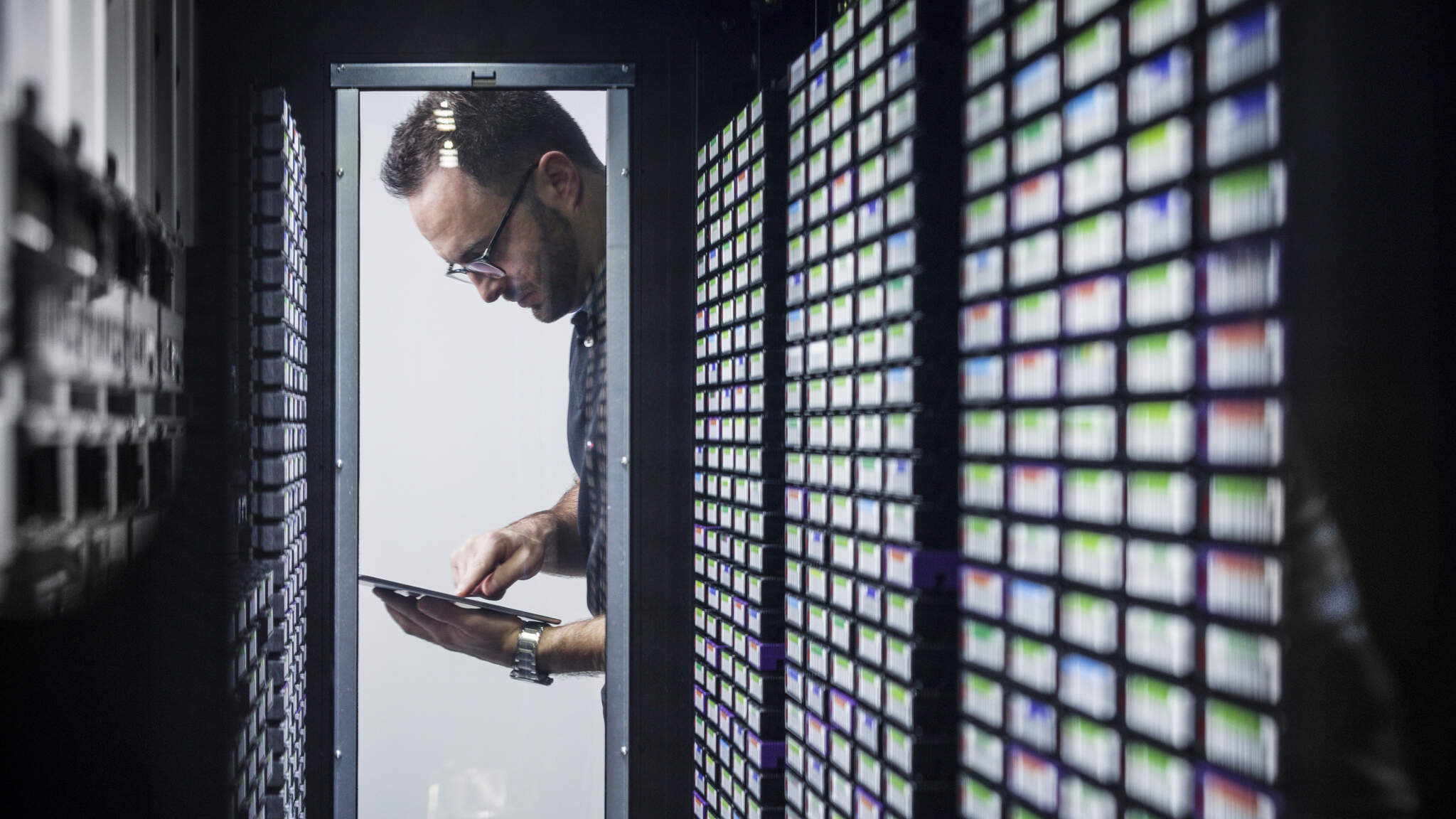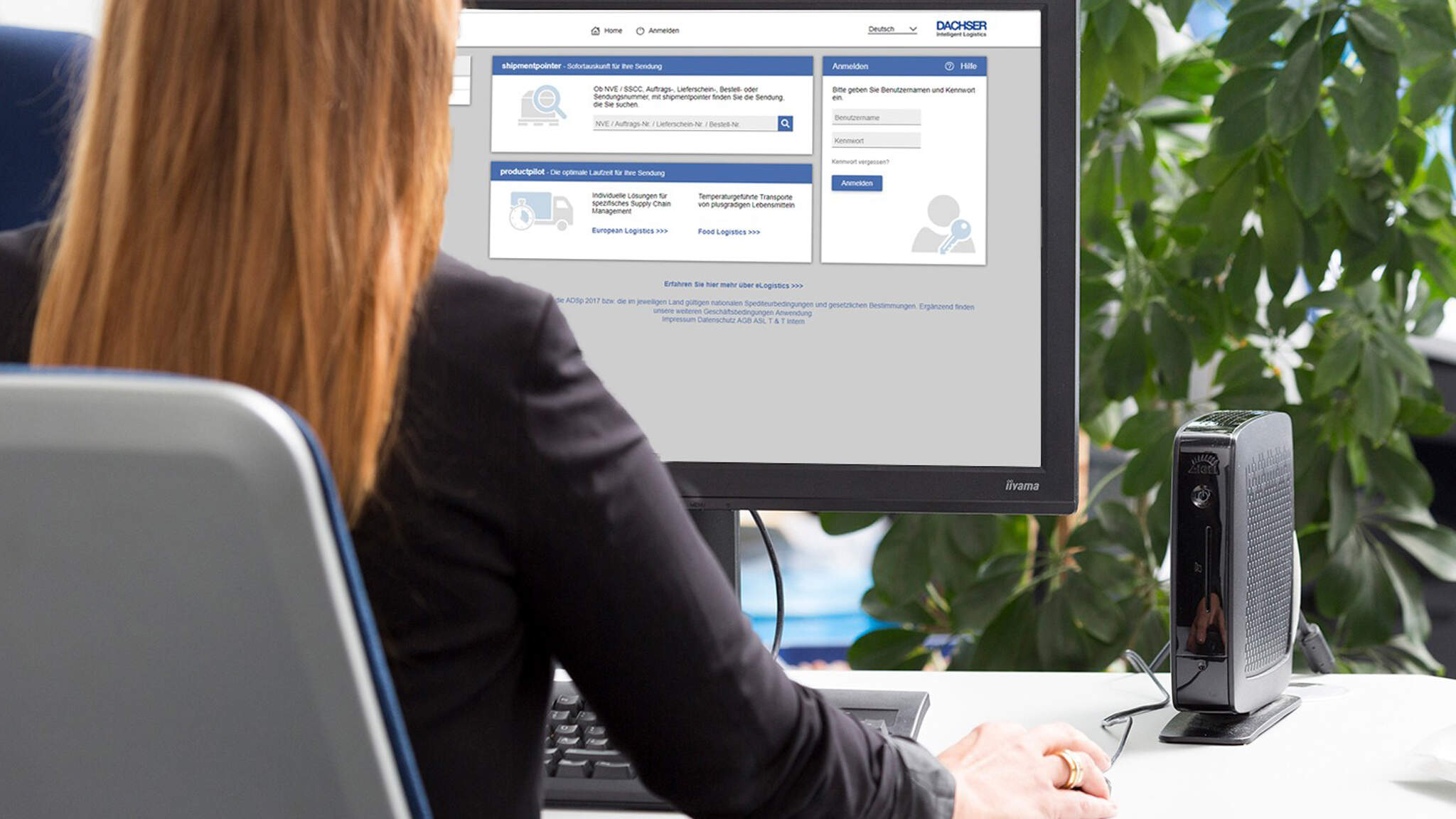The power of data
Faster and better data ultimately benefits the entire supply chain. How to make goods and information flows more predictable, efficient, and sustainable in times of scarce resources.

The logistics industry recognized decades ago, not only that it needed to provide information to accompany the flow of goods, but that this information was almost as important as the goods themselves. When will the shipment arrive? Are there any delays in the supply chain? How do external influences impact transit time? To provide answers to these customer questions and increase supply chain transparency, tracking & tracing, supply chain event management, and other IT systems are often employed.
For the logistics providers’ part, core systems for transport management paired with special planning tools provide the dispatchers with the information they need. But one thing that’s still true today is that the dispatchers’ personal experience, own expertise, and reliable contacts play a key role in the day-to-day planning of deliveries and collections.
For years now, logistics has been optimizing its processes and increasing its efficiency to an extent that is unparalleled in most other industries. “But as things stand, this approach no longer lends itself to overcoming challenges like shortages of drivers and loading space, pronounced seasonal peaks, restricted access to city centers, and increasing demands for sustainability,” says Michael Schilling, COO Road Logistics at DACHSER. He calls for senders and logistics providers to “work together to bring an unprecedented level of planning certainty, efficiency, and, above all, precision to logistics.” And in light of the weakening economy, which inevitably puts increasing pressure on efficiency and costs, he sees no better time to act than now. “To ensure a reliable flow of goods and uninterrupted supply chains, Industry 4.0 needs Logistics 4.0, and vice versa. After the severe shortfall in resources we experienced in the fall season of 2017, everyone is now much more aware of the problem and has a better understanding of it,” Schilling explains.
Accurate quantity planning and control
The key to accurate quantity planning and control lies at the very beginning of the logistics process chain—in the shipment data that the sender transmits to their logistics partner: in the future, this data will have to be made available in fully digital form and also at an earlier stage of the chain than before. DACHSER offers a range of flexible options for connecting to the relevant interfaces (e.g., EDI, API) to make this data transfer as straightforward as possible.
“Faster and better data ultimately benefits the entire supply chain.” Michael Schilling, COO DACHSER
One goal in this regard is to have this data be available the day prior to forwarding. This would trigger a notification that would make it possible to create a scheduling forecast. In turn, this would increase efficiency in all the downstream processes in the groupage network—from procuring load capacity all the way to final delivery. In times of growing uncertainty and scarce resources, such planning data is a key factor. Earlier availability of such data would also pave the way for AI and predictive analytics applications in the future.

The new standard: Notification on the day before forwarding
“If notification on the day before were made standard practice, it would allow companies and logistics providers to harness a great deal of untapped efficiency and sustainability potential,” Schilling emphasizes. He goes on to name some figures: at DACHSER, notification is sent on the day before pickup for around 20 percent of industrial goods shipments in Europe. In food logistics, this figure is already as high as 67 percent—but even here there is still considerable room for improvement. “We’re making it our mission to ensure that at DACHSER, notification on the day before forwarding becomes standard practice for overland transport in Europe,” Schilling says.
To prepare for the market’s growing requirements profile, DACHSER is investing in its scheduling systems and, as part of the Idea2net Short Distance 2.0 project, systematically orienting their functionalities toward the processing of early planning data. Following a comprehensive overhaul of its scheduling software tools, the company already rolled some out in 2019. More large-scale developments are set to follow in 2020 and beyond.
The aim is to expand, automate, and simplify data-driven scheduling. This way, the inbound branch receives information about when incoming goods are expected from the delivering branch in the late afternoon as opposed to midnight, as was the case before. The software generates an advance, provisional schedule at the push of a button, which the dispatcher can then optimize. An application that provides information about opening hours, delivery conditions, and delivery restrictions is also linked to the scheduling tool. Starting in 2020, DACHSER will introduce state-of-the-art handheld devices for drivers, which will further accelerate data collection and transfer. As a result, drivers will also become part of the information and planning process.
However, notifications are only one part of the equation. “If we want to increase planning transparency and efficiency, logistics providers and customers also need to work on the quality of data. After all, you can’t expect digitalized systems to generate optimum results if the data you feed them is incomplete or contains errors,” Schilling explains. He says that there needs to be a supply chain that can be planned in every aspect and that makes the best use of the resources available to maximize efficiency and sustainability: “Faster and better data ultimately benefits the entire supply chain.”